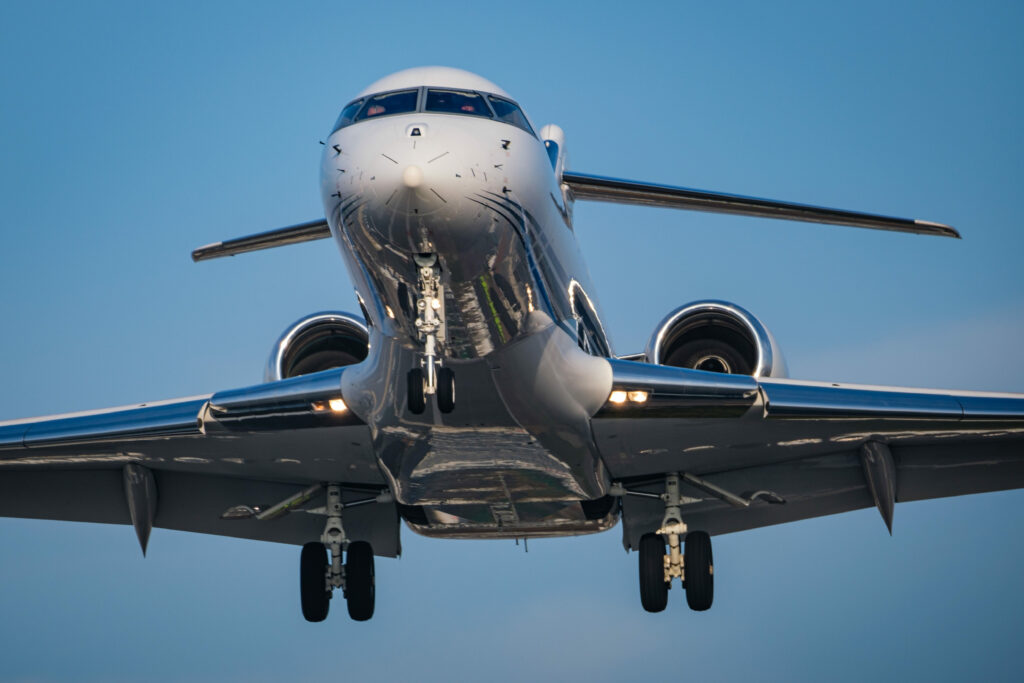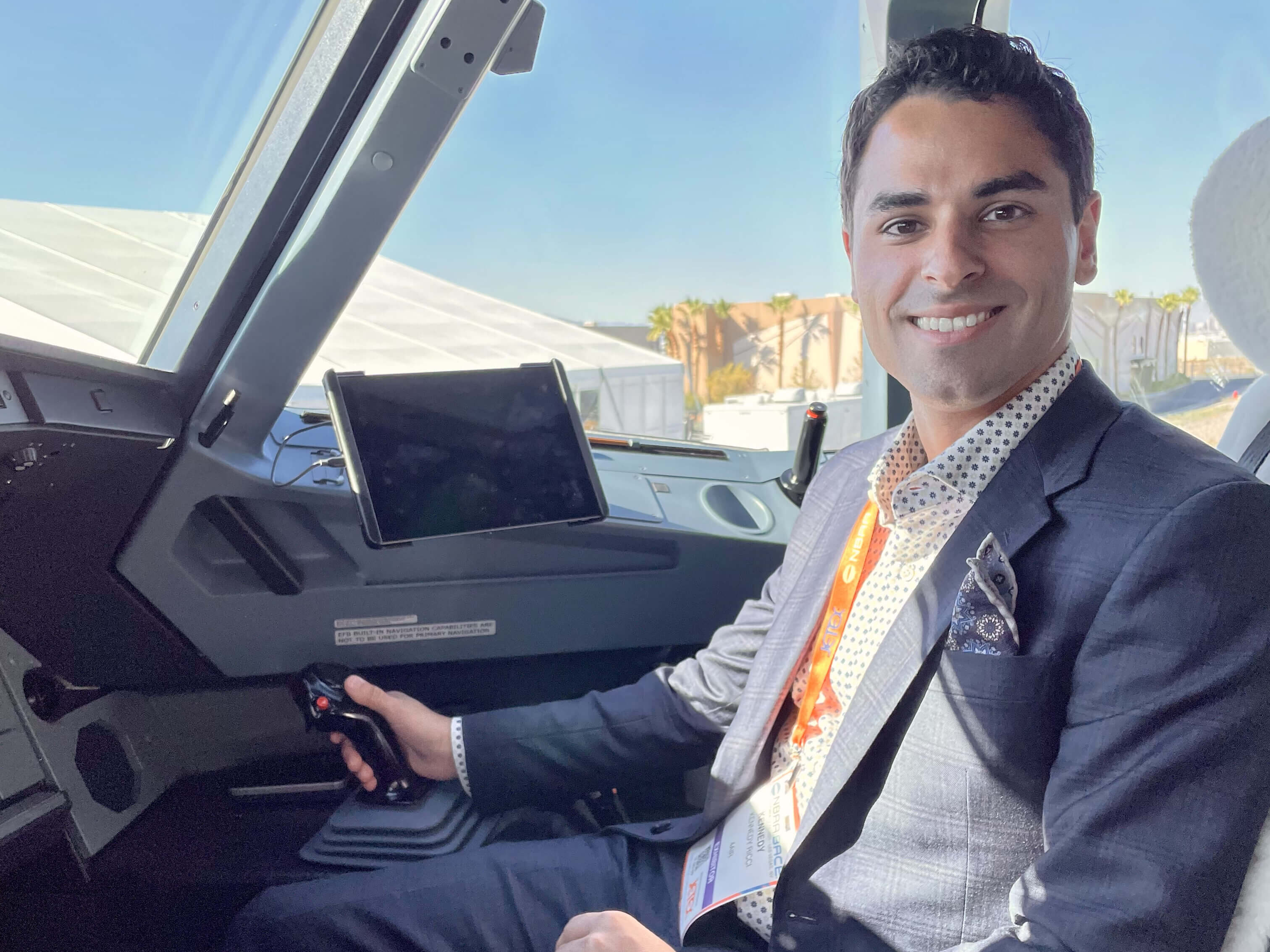Estimated reading time 8 minutes, 38 seconds.
Aviation must have been a common topic around the Ricci family dinner table. With industry involvement running three generations deep, it’s no surprise that Kennedy Ricci became a pilot himself.
As an aviator who is also concerned about the industry’s environmental impact, Ricci recognized the growing emphasis on sustainability in recent years. In 2021, he and his business partner, Nancy Bsales, launched 4AIR – a turnkey provider of simplified and verifiable solutions for greener flight, many of them geared specially to the nuances of business aviation.
Based in Cleveland, Ohio, 4AIR has built an impressive client list in just two short years, including Southwest Airlines, Clay Lacy Aviation, Flexjet, GE Honda Aero Engines, and Global Aerospace.
Ricci, the company’s president, said 4AIR is focused on communicating transparent sustainability solutions. It offers clients four program options.

The bronze level helps operators achieve a 100 percent carbon offset of an aircraft’s carbon footprint. The silver level achieves emissions-neutral status, with 300 percent carbon offset of an aircraft’s carbon footprint to account for non-carbon emissions such as soot, water vapor, and contrails. The third level, gold, takes them beyond neutral, with 300 percent offset plus a five percent reduction through the use of SAF credits. Finally, platinum level four achieves all the goals of the first three levels, plus adds a $2 per month contribution to the Aviation Climate Fund to advance sustainable aviation technology.
“We recognized that for several years now, there has been a growing interest and trend in sustainability,” said Ricci. “People started to offset and use SAF [sustainable aviation fuel], and there were a lot of press releases around it. We realized the need to set a baseline for everybody. That led to our four ratings – each level looks a bit more forward and farther out there. How do we go carbon neutral today (the offsets-only options); how do we do it tomorrow (SAF); and what does the future look like? How do we enable solutions down the road?”
He added that 4AIR has 40 to 50 approved offset programs in its portfolio, all of them double verified during the design phase and at each issuance of the offset. In addition, third-party carbon rating agencies have begun to evaluate projects, too. 4AIR works with its clients to choose the offset programs that matter to them most.
However, while offsets are good tools to make a difference today, Ricci said the industry’s goal of achieving net-zero emissions by 2050 will take a more comprehensive approach.
“We don’t want to use offsets to achieve our goals in 2050,” he commented. “We have these future goals, but we need to be doing more today. It starts with going carbon neutral – how do we make the solutions for going carbon neutral over time? How do we reduce our emissions from operations? As well, what are the opportunities for operators to support SAF and electric or hydrogen aircraft? There will be other carbon removal technologies, too, as we develop technologies and scale them up. As an industry, there is a long path ahead, but we are encouraged with our progress.”
When asked to compare carbon offsets with SAF book-and-claim programs – which allow operators who don’t have access to SAF to obtain credits when they purchase it for another operator who does – Ricci said they are similar but different.
“Carbon offsets make a reduction outside of the aviation industry,” he explained. “So, we are aligning financing with the lowest-hanging fruits. As offsetting becomes more mainstream and SAF more prevalent, the cost of offsetting and the cost of SAF will cross over. Then, there will be a shift to SAF. We still have a way to go before we have a cost parity between the two. We need to do both in the long run.”
If an operator is currently using SAF, 4AIR will help them document the blend, feedstock and other important details that contribute to their amount of carbon reduction. Through book-and-claim, the company also connects those who are willing to pay for SAF with those who are near its production sites – minimizing the cost and extra emissions created by transporting that fuel across the country.
When asked to compare the European approach to aviation sustainability in comparison to that of North America, Ricci said it’s more regulatory-based across the pond. By contrast, North American operators tend to make voluntary changes in response to incentive-based offerings, such as the U.S. blender’s tax credit.

“Individual organizations are taking the initiative to push for it,” he noted. “We see a lot of people taking the initiative and interest has accelerated over the last couple of years, more than I ever expected. It’s really become a central issue for people in the States.”
While industry members believe in the importance of SAF, Ricci added that more education is needed for decision-makers in stakeholder organizations – the CEO of a company that uses business jets, for example.
Regardless, Ricci is excited about the innovations to come over the next decades.
“The innovation that sustainability has spawned within aviation is so exciting to be part of,” he said. “For us, increasing technology around SAF transparency is key. Documenting SAF will be more important for regulatory compliance, and it will get more difficult over time as we need to prove our feedstocks are truly sustainable. We are also looking at non-carbon emissions – about one-third of our environmental impact comes from carbon, but the other two-thirds come from non-carbon sources.”
These include contrails, or condensation trails, which appear in the sky behind jet aircraft. They have been found to trap heat in the atmosphere.
“There is some interesting research going on around contrail mitigation and avoidance,” concluded Ricci. “It will be really interesting to see what occurs over the next 30 to 50 years, such as re-evaluating aircraft missions. Can electric aircraft do short-haul missions and where does hydrogen fit? It’s an exciting place to be.”








